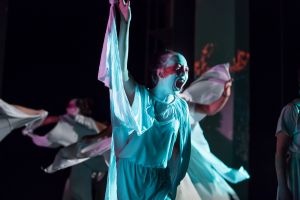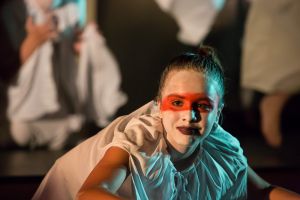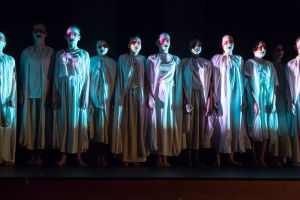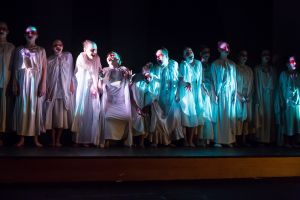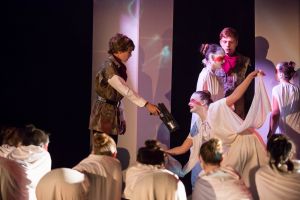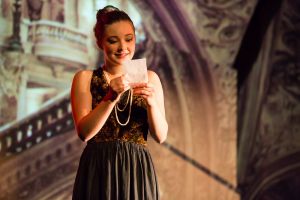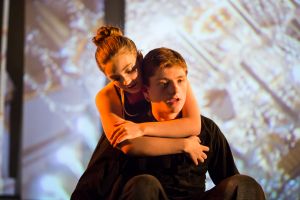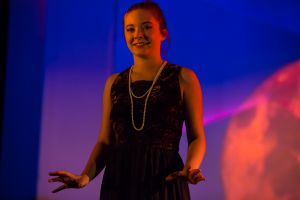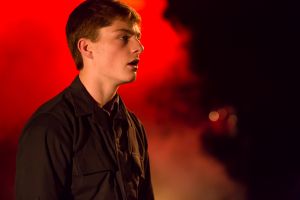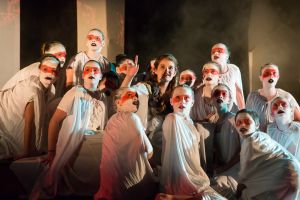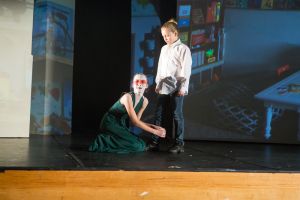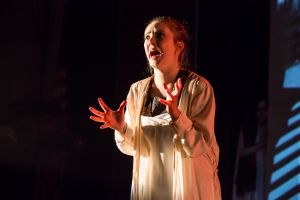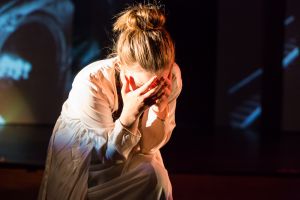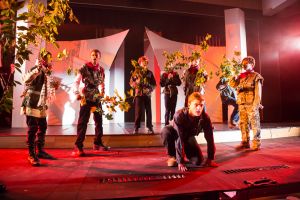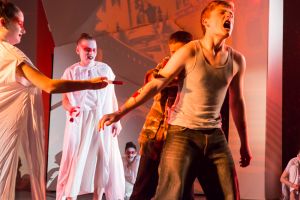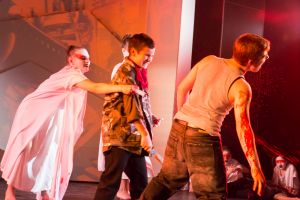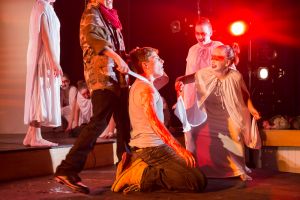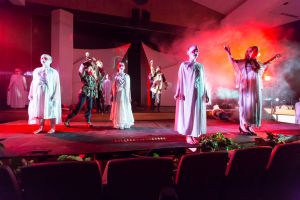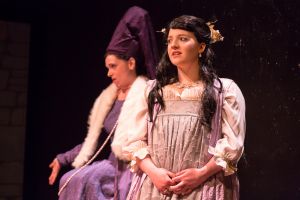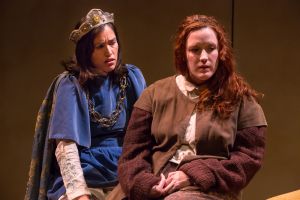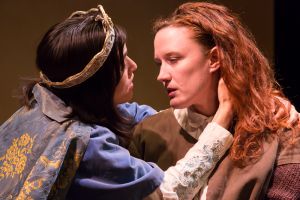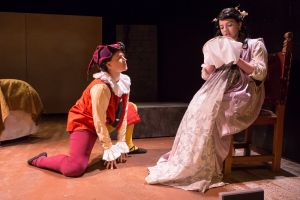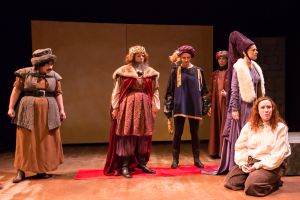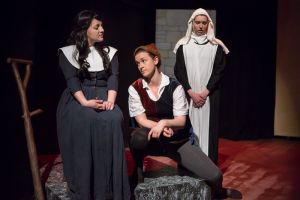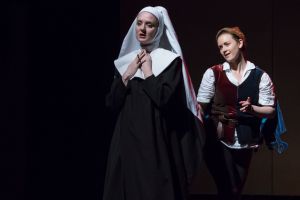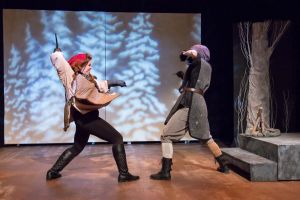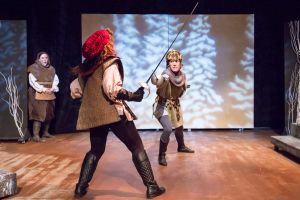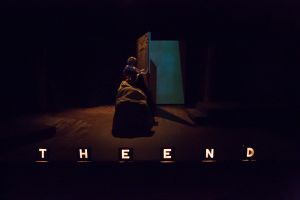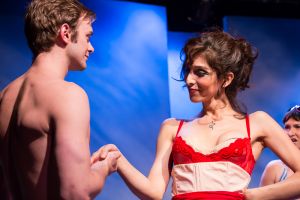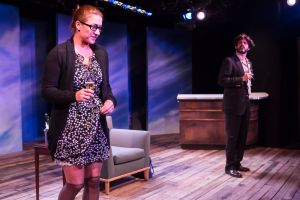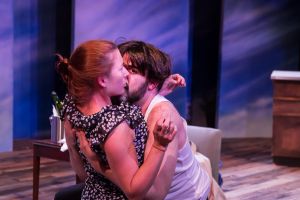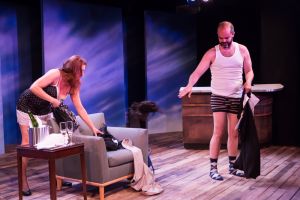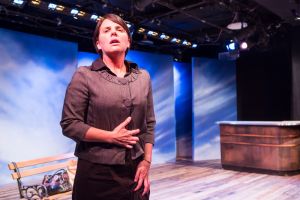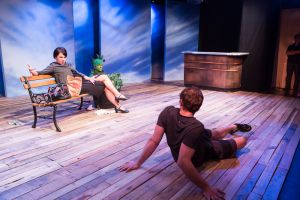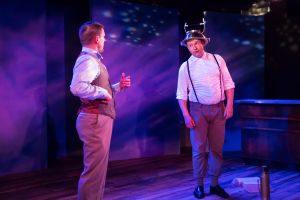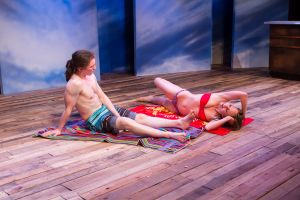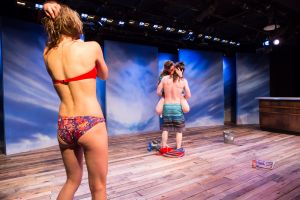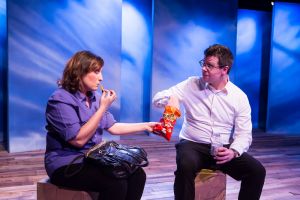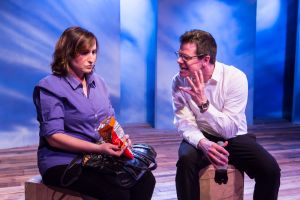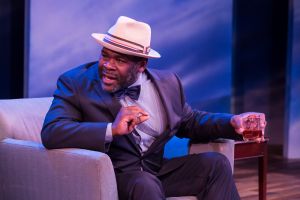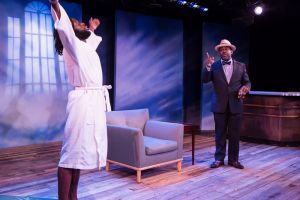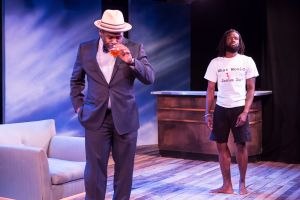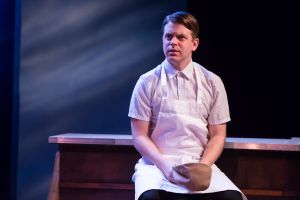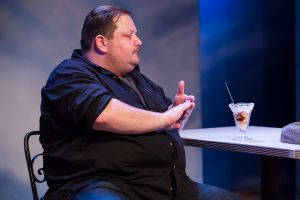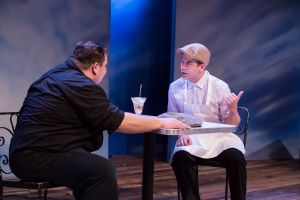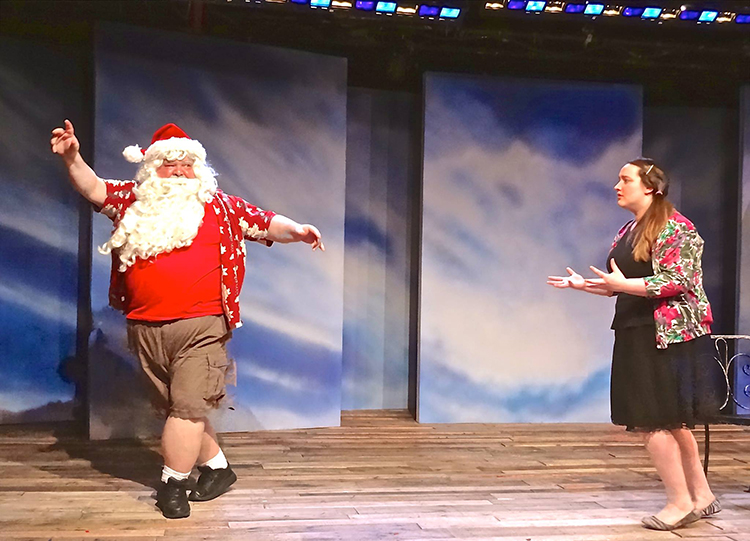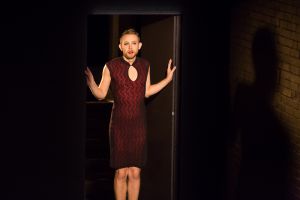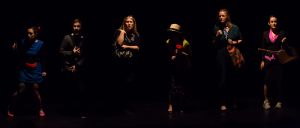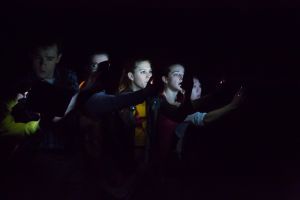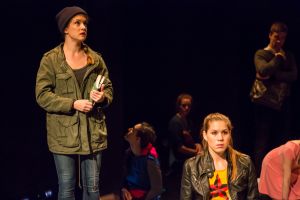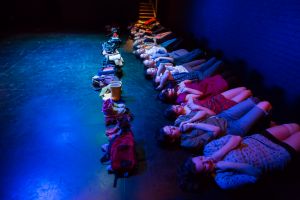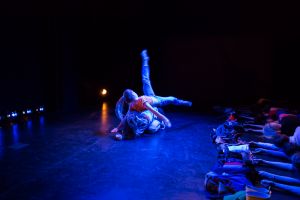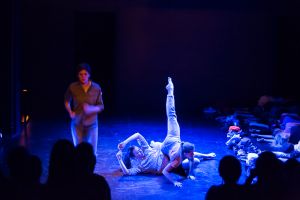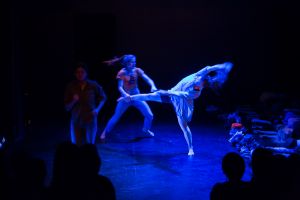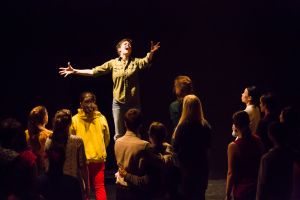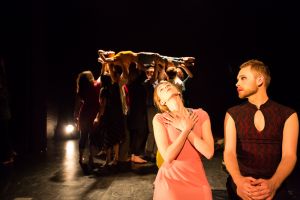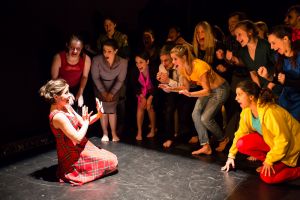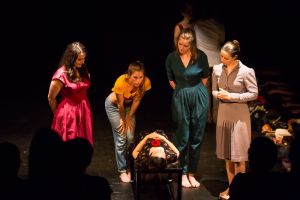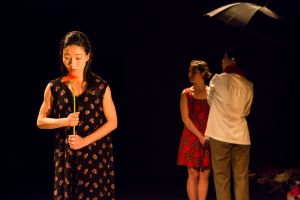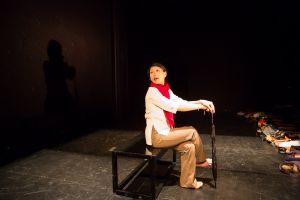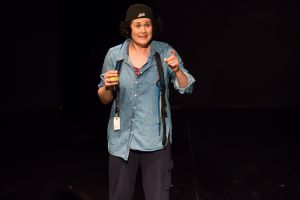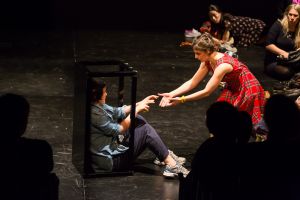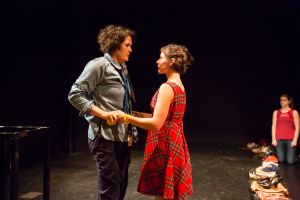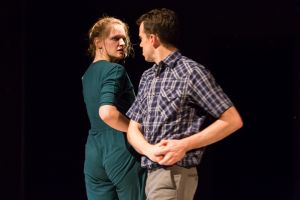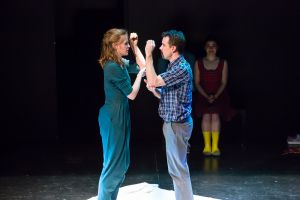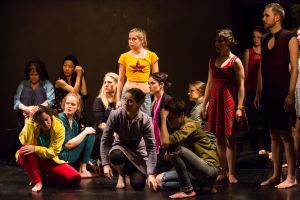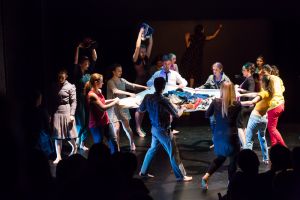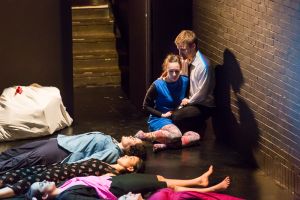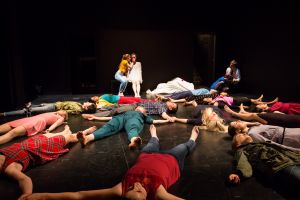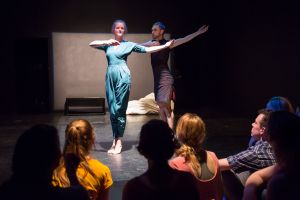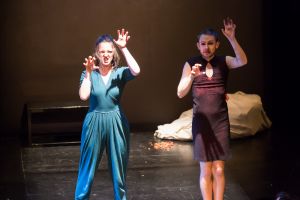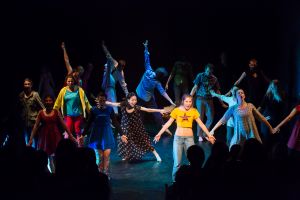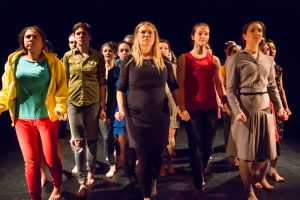I wasn’t originally going to blog about this. It was just going to be some shots for the kids, but darned if there aren’t some compelling visuals in here!
I met Christian Ely a few years back when I choreographed the fights for a play he was directing for a short play festival. It was a food fight that goes over the top… in an elevator! Fast forward 7 or so years later and Christian reconnects with me through a friend — he’s teaching and directing at a middle school in NJ and would I like to come fight direct a Romeo & Juliet? Well, schedules didn’t work out that year, but this year they did for Macbeth. I didn’t know what to expect — I knew going in that we had a cast of almost 40 thirteen year-olds. 20-odd witches, an army of soldiers… but what could we actually accomplish? I needn’t have worried. These kids were committed to the play and to their director. He does not pull the play down to a “middle school” level, he pushes it up above some NY productions I’ve experienced! The witches are an omnipresent force of nature (or supernature?) and create some gorgeous images with their striking makeup and costumes. The set is a mobile and grand canvas for evocative projections (created by an MKA alum, now in the business). Add haze, lights and sound and it’s an effective take on this story of ambition.
One of my favorite moments was a discussion about if we should have blood. “Oh, I want blood,” Christian said. “OK, how bloody can we get the children,” I asked — expecting a couple little smears or blood packs. “Buckets!” came his response. A gallon of blood was ordered and with dilution, we’re talking about 1.5 – 2 gallons possible. From what I’ve seen, I’m guessing these kids will wring every last corpuscle out of that jug!
On to shooting it. The auditorium is a vast space and the stage, including an apron built into the space made for a lot of area to cover, especially trying to fit all 37 kids into a single frame. I moved between all of my lenses, but relied more heavily on the 70-200 mm f/2.8 L IS II than I have been recently in the usual small NYC spaces. Light was challenging — the look of the piece was very stark, so lighting tended to be dark, sometimes accented with hot spots, with few scenes in any kind of wash. the witches in their white makeup and gowns tended to blow out quite easily, especially when they were sharing the stage with Macbeth and Banquo in their pseudo-military garb. The witches movement was very dance based so I tried to dial down the shutter speed on a few occasions to get some motion blur to evoke that dynamic.
The battle scene was pretty epic, with just about everyone on stage — soldiers fighting, witches applying blood and feasting on the carnage. Visually it was chaotic — we slowed the fight to slow motion, not for safety concerns (the kids were very good about stage combat safety!), but because there were so many bodies, it was too much to take in at full speed. Blood effects for the final fight went well. You can see the spray of blood coming from a couple of syringes, which “painted” his body with blood, but were also effective photographically.
